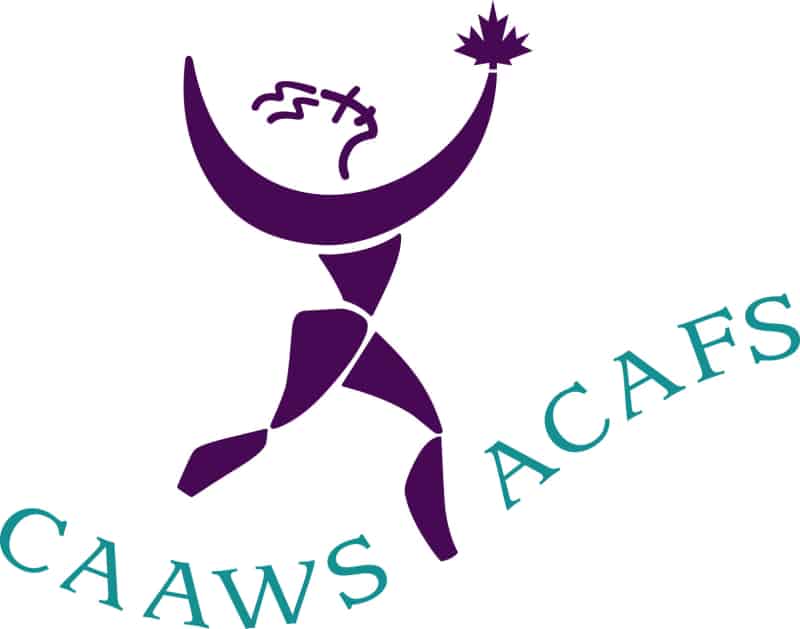With the 2015 Toronto Pan / Para Pan Am Games just around the corner, we have an opportunity to examine gender equality in sports. Women’s involvement and exposure in sports is still far from where it should be (did you know that only 19% of women participate in sports compared to 35% of men?). There are committees out there designed to ensure the needs of women are considered and integrated into resulting programs and initiatives.
Karin Lofstrom is Executive Director for the Canadian Association for the Advancement of Women and Sport and Physical Activity (CAAWS). For more than 29 years, she has been an active participant, volunteer, leader, mentor and advocate for girls and women in sport and physical activity, both in Canada and internationally.
Prior to working with CAAWS, Karin held a number of positions as coach, national team coordinator, chef de mission, administrator, manager and volunteer across a range of sports including field hockey, basketball, ice hockey, figure skating, golf and attended Olympic Games and other major international events in a variety of roles.
We were so inspired by Karin’s dedication to achieving gender equity in the Canadian sport system that we decided to ask her a few questions about the importance of women’s involvement in sports and how it has changed over the years.
What does a typical day look like for you, from waking up to going to bed?
Up and off to work, catch-up on email, meetings, report writing, presentation prep, phone calls, off to the gym at lunch or after work. I’m more likely to stay longer at work than get in early. Home for dinner with my partner or off to the golf club for 9 holes. Might watch a bit of TV or look at the Internet. Most likely watch the news and get to bed by 11:00ish.
You have a day off to do whatever your heart desires! Where do you eat? Shop? Stroll? Workout?
My days off in the summer usually involve golf. In the Toronto area I like to try the different Clublink courses, my favorite being Wyndance. I like to eat on the patio overlooking the golf course, which is in the old rock quarry. When in town I’m heading to an outdoors store like MEC or Eddie Bauer. If not golfing then I like to check out the hotel fitness centre or a walk to explore downtown streets.
Congratulations on your involvement with CAAWS. How did the idea for this organization come about?
The organization started in 1981, with a passionate group of women and a few men who we refer to as the “Founding Mothers.” They wanted to see more girls and women have an opportunity to be involved in sports. They advocated for more funding to support women being on National Teams in the various sports and to get policies in place to support gender equity.
How do you define success for yourself?
I think it is a culmination of lots of small things. I always enjoy seeing the smiles on the young girl’s face when I see them having fun, learning a new skill, gaining self-confidence, encouraging their friends to get involved in sport and physical activity; when the light bulb goes on for the coach, especially when we are having a discussion about how to engage more girl and women in sport; when they understand that they might need to coach differently to meet the needs of the girls. Also, when we see women gaining leadership positions in sport, be it as a coach, volunteer board member, official or sport administrator. I think CAAWS has helped pave the way for more opportunities for girls and women to participate and lead in sport.
What do you love most about your industry?
The passionate people who want to help girls and women reap all the benefits possible from a positive experience in sport and physical activity. We have seen the great response to the FIFA Women’s World Cup from all across Canada. Women’s sport is entertaining, exciting and full of passion. At the present time there is lots of positive energy around sport in Canada and now with the focus on the 2015 Toronto Pan / Para Pan Am Games, I hope the energy will continue and that there is lots of success for our female (and male) athletes.
What aspect of the business do you find the most challenging?
Women’s sports do not get the same TV exposure or corporate support. CAAWS is working with some early corporate leaders in Dairy Farmers of Canada and the Fueling Women Champions initiative to shine a light on women’s sports and try to raise the profile. We need to keep educating sport leaders on ways to actively engage girls and women in sport and physical activity. We know there are great benefits to doing this. Also we need to more resources for the under-served segments of the population, be it Aboriginal or newcomer girls, women 55-70+ or LSES mothers, so all can benefit for more access to sport and physical activity.
How has women¹s involvement in sports changed over the years?
We do see more girls and women getting the opportunity to play sports, but the numbers still lag behind men with only 19% of women participating in sports compared to 35% of men. Men also outnumber women in coaching and leadership positions. We are seeing Canadian women doing very well at the Olympic and Paralympic level winning a large percentage of the medals at each game, but in between the big games they do not get as much media coverage. I’m happy to report that young girls now do have female role models to look up to, like Hayley Wickenheiser, Clara Hughes, Kallie Humphries, and Rosie MacLennan.
If you could try a different career for a bit, what would it be?
I would like to play golf professionally. I started golf too late to play it more seriously but I think it would be interesting to see what it would be like to work at it. Not sure I’d make any money at it though.




 Follow Us On Instagram
Follow Us On Instagram
